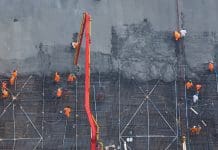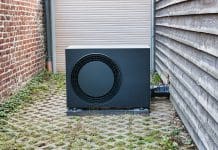In light of the recent Future Buildings Standard consultation, the Building Controls Industry Association (BCIA) is calling on Parliament to prioritise the implementation of Class A building controls in both new and existing non-domestic buildings throughout the UK
During the Future Buildings Standard consultation, the BCIA submitted its recommendations to the new government.
Aiming to promote the use of controls as key to building operational efficiency, the organisation is now calling on the government to consider the evidence-based impact that building controls and automation can have.
Part L regulations are affecting the Future Buildings Standard
With that in mind, the BCIA has recommended that guidance for the installation of BACS based on heating, ventilation and air conditioning output should be changed to a mandatory requirement for HVAC systems above 180kW to decrease to 70kW between 2025 and 2030.
Making this mandatory will boost compliance with energy efficiency and carbon standards.
It will also accelerate the adoption of BACS, cutting carbon emissions and energy use.
The BCIA estimates that requiring Class A BACS in commercial and public buildings with HVAC outputs over 180kW could save £16.9bn in energy bills and reduce CO2e by 39.6 Mt by 2040.
A Class A building controls strategy for high energy efficiency
The BCIA advocates for an occupancy-based Class A building control strategy for new buildings to enhance energy efficiency across all building services.
Heating controls should also be part of a comprehensive strategy supporting all HVAC systems.
With 80% of current UK buildings likely to remain in 2050, retrofitting is vital for net zero targets, but current UK policy lacks direction.
The BCIA urges updating Building Regulations with a timeline for mandatory Class A BACS installation in new and existing buildings, including a clear end date.
They also recommend a minimum standard for scheduled BACS maintenance to avoid missed opportunities for energy and carbon savings.
Additionally, integrated smart controls should be implemented to manage the increased demands on the National Grid from buildings using electric technologies for heat and transport.
Reference and scoring for automatic demand control
The BCIA recommend scoring for networked room automation due to smart controls being able to deliver automated optimisation through a series of functions.
Occupancy demand-based controls for heating, cooling, and hot water should be considered, as these systems account for significant energy use in non-domestic buildings.
Such controls typically reduce energy consumption and lower user energy bills.
The Simplified Building Energy Model (SBEM) is used to assess the energy performance of new and existing non-domestic buildings.
The BCIA is calling for clarity on how building controls are evaluated within SBEM.
Current technology and scoring do not align with Class A building controls, which have substantial energy and carbon-saving potential.














